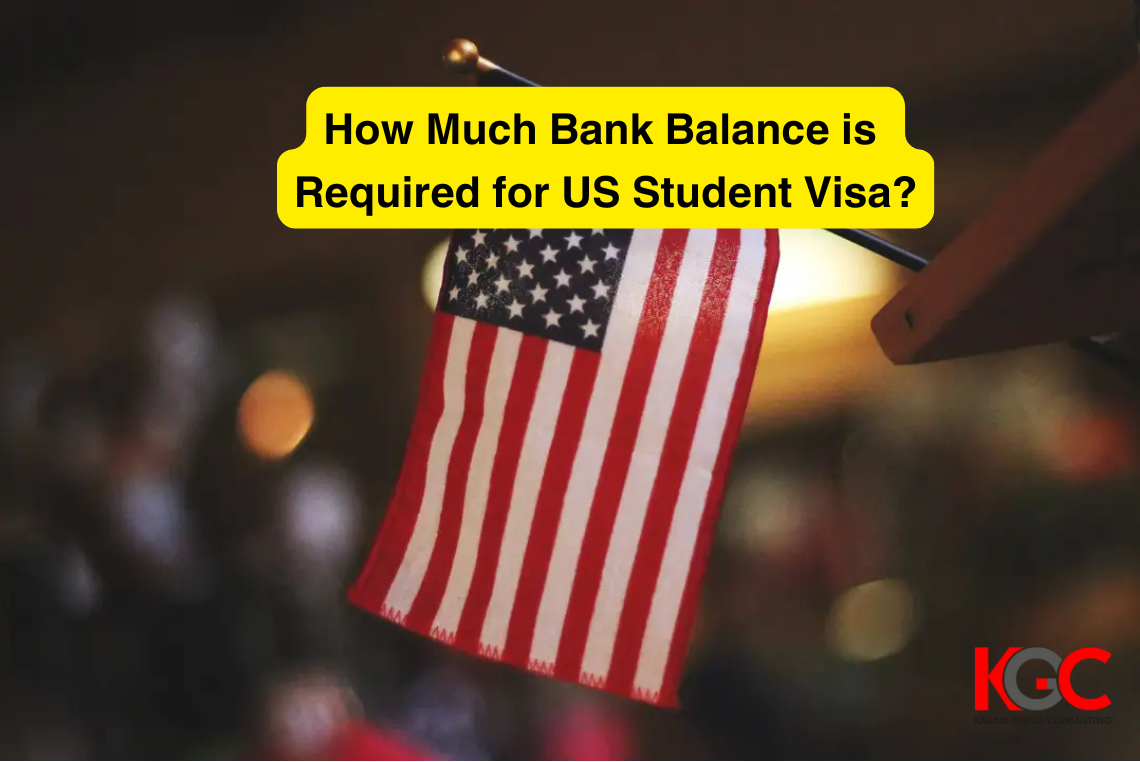- +91 22 23526372
- kgc@karangupta.com

To obtain a US student visa, particularly the F-1 visa, applicants must demonstrate sufficient financial resources to cover at least one year of tuition and living expenses. This generally requires showing a bank balance or financial support equivalent to the estimated cost of attending the university, which can range from $20,000 to over $60,000, depending on the institution and location. The visa process involves securing admission to a SEVP-certified US school, receiving a Form I-20, paying the SEVIS fee, completing the DS-160 form, scheduling a visa interview, and providing proof of financial stability, including bank statements or scholarship letters. This ensures the student can afford their education without resorting to unauthorised work.
Unlike other countries, the US prioritises whether you can personally cover your unique expenses.
The key to securing your visa is demonstrating that you have sufficient funds to cover your entire study period, as outlined in your I-20 form (Certificate of Eligibility for Nonimmigrant Student Status). While there isn’t a specific minimum amount required, most universities and embassies suggest having enough to cover at least the first year’s estimated expenses as indicated on your I-20. This helps reassure officials that you can financially support yourself when you begin your studies.
Some sources might recommend having at least $10,000 ₹8,33,510 (based on an exchange rate of ₹83.35 per US dollar) or 1.5 times the expenses listed on your I-20, but this is just a rough guideline. What matters is showing you have enough to cover your costs.
Key points to consider:
The estimated expenses on your I-20 form can vary greatly based on several factors:
Tuition fees at public universities are generally lower than those at private institutions.
Living costs are usually higher in urban areas compared to rural ones.
Programs like medicine or engineering may have different associated costs than others.
Key Highlights
|
Minimum Bank Balance for a US Visa |
You should have enough funds to cover tuition fees and living expenses for one year. |
|
Documents for Proof of Funds |
Acceptable documents include bank statements, scholarship or grant letters, loan approval documents, and sponsor letters. |
|
Sponsor Requirements |
Sponsors can be family members, individuals, or organisations. They must demonstrate financial stability through bank statements and income verification. |
|
Dependent Costs |
Account for additional living expenses if dependents accompany you. |
|
Funding Source Evaluation |
Ensure your funding sources are legitimate, liquid, and sustainable, whether through loans or sponsors. |
|
Scholarship Tips |
Start your research early, ensure you meet the eligibility requirements, and submit a strong application. |
|
Proof Submission |
Submitting proof of funds is essential for issuing your I-20 and visa approval. |
Fixed Deposits Receipt - Attested by the Bank
Provide a receipt showing the amount of fixed deposits.
Ensure the bank official attests or signs the receipt to verify authenticity.
The document should include details like deposit amount, maturity date, and account holder's name.
Submit recent savings bank statements showing sufficient funds.
Obtain a balance certificate from the bank, confirming the account balance.
The certificate should be attested by a bank official to confirm the accuracy of the information.
Provide a passbook or recent bank statement for the Provident Fund (PF) or Public Provident Fund (PPF).
Ensure the documents clearly show the current balance and account details.
These documents should be official and include necessary attestation if required.
Submit official property documents such as title deeds or land records.
Include documentation proving ownership and the value of the property.
Ensure that the papers are official and can be verified if needed.
When applying for a U.S. student visa, financial stability is a crucial aspect of your application. Beyond the typical financial documents like bank statements and property deeds, presenting a well-prepared loan approval letter or sponsor letter can significantly strengthen your case. Here’s a detailed guide on what to include in these documents and how to present them effectively.
Key Inclusions:
Loan Confirmation: Clearly state the approved loan amount.
Disbursement Details: Specify how and when the funds will be released.
Borrower Identification: Identify yourself as the borrower.
Presentation Tips:
Source Credibility: The letter should come from a recognised and reputable lending institution, such as a bank or a government agency.
Detailed Terms: The letter must outline the loan's terms and conditions, including interest rates, repayment schedules, and any grace periods.
Key Inclusions:
Statement of Support: The sponsor should clearly express their commitment to financially support your studies for the entire duration of your program.
Specific Funding Details: Mention the exact amount of funding the sponsor will provide, whether annually or per semester.
Sponsor Information: Include the sponsor’s full contact details, such as their name, address, phone number, and email.
Presentation Tips:
Financial Verification: Attach supporting documents that prove the sponsor’s financial stability, such as bank statements or employment verification letters showing their income.
Signatures and Dates: Ensure the sponsor letter is properly signed and dated.
Multiple Sponsors: If more than one person is sponsoring you, each sponsor should provide a separate letter detailing their contribution.
